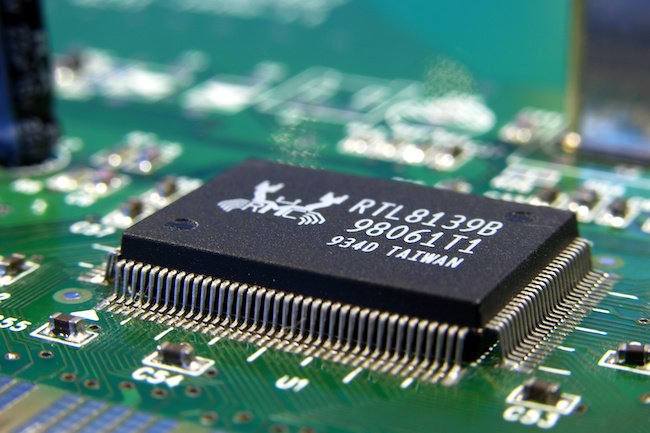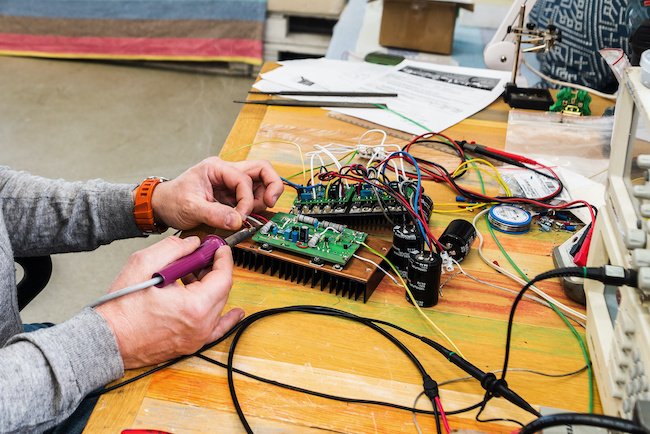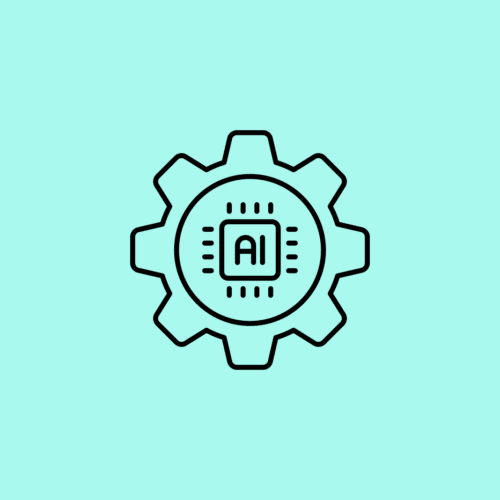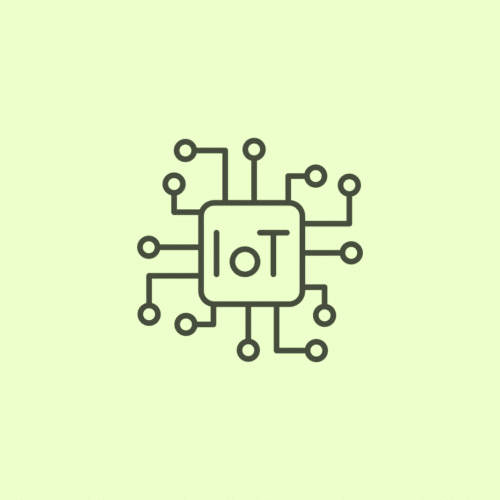BLOG
Top IoT Boards for Development & Prototyping: 2025 Update
There are lots of exciting developments happening in the world of IoT hardware. Arguably one of the most exciting, however, is our ability to achieve Agile hardware development through a rapid prototyping process and early tech stack integration. If you’ve typically used the Waterfall method in your IoT hardware development process, switching to Agile can enable more efficient and nimble workflows.
Leveraging the Agile methodology for IoT hardware development, however, begins with using the right kind of board. In this article, we’ll explore our top picks for microcontrollers, microprocessors, and IoT boards necessary for building a robust IoT product.
Dev Kits, Defined
You’ll hear us reference “dev kits” frequently throughout this article. In short, a dev kit is a tiny, hackable computer that’s made for tinkering.
More specifically, dev kits are usually single board computers (SBCs) that include pre-certified RF communications natively on the board. Generally, they provide easy access to input/output (I/O) pins so that we can interface with custom circuitry and start developing the firmware to run the components. Dev kits provide us with a base for building IoT devices and include IoT boards.
Think of a dev kit as a premade meal you purchase at a store and heat up quickly in your home oven. If you like it, you might later create a similar meal from scratch that’s customized to suit your unique preferences. We use dev kits to determine if we like the “taste” of the ingredients, then we assemble a custom “meal” from the ingredients to suit our client’s needs.
Choosing a Microcontroller (MCU) or Microprocessor (MPU)
Your choice of processor — MCU or MPU — will impact your bill-of-materials cost. A lower-powered MCU that runs either on embedded C or a real-time operating system (RTOS) will cost less than the more powerful MPU, which can run embedded Linux.
However, while cost is one dimension of MCU vs MPU selection, a much more important one is capability. It comes down to software/firmware complexity. If all you need to do is read some sensors and transmit the data, an MCU is probably the best choice because it’s cheap and low power. If you need to do more complex operations such as machine learning or edge-hosted applications, then you’ll want a more powerful MPU — which will cost more and use more power.
MPU + Linux
At Very, we’ve worked with many Linux solutions like Nerves, an IoT-specific platform written in Elixir, however as technology changes and grows, we also grow. Most recently Very has been implementing Yocto, which, like Nerves, helps developers create custom Linux-based systems, primarily for embedded devices. Yocto is an open-source project which can help developers build on the project for their own needs and provide feedback to help create an overall better platform. Using Yocto enables us to have a baseline target system up and running in a matter of weeks, and we can create a minimum viable product (MVP) in less than six months for many projects.
MCU + Embedded C/RTOS
We’ve been successful in our recent work with Zephyr RTOS, an embedded C framework that provides for built-in support for over 350 boards. It’s easily set up, scalable, and isn’t tied to any particular cloud offering. Most importantly, Zephyr makes it surprisingly easy to recompile the firmware for a different processor by changing only one line of code. This allows us to bring the portability of embedded Linux to the lower-level, lower-cost world of microcontrollers.
Choosing an IoT Board: What To Look Out For

As you begin your search for an IoT board, look out for four critical components.
The first is the board’s connectivity options. This goes without saying, given that a smart device is largely defined by its connectivity capabilities.
You’ll also want to make sure the board supports peripherals and desired features. These can include common ports like USB or HDMI, buses for serial protocols like I2C and SPI, or pin-outs for pulse width modulation (PWM) devices like dimmable lights or servo motors.
Lastly, open source hardware (OSHW) is always a big plus. It’s a good sign if schematic and Gerber files — files that show the printed circuit board (PCB) designs — are provided, too.
Top IoT Boards and Dev Kits in 2025

Without further ado, here are our top nine IoT boards for product development and rapid prototyping in 2025. As of the writing of this blog, all of the boards listed come in under the $100 mark.
1) i.MX8 PLUS Compulab SOM + Compulab Evaluation Kit
NXP is a favorite for the hardware and firmware engineers here at Very. With their vast knowledge and wide variety of processors, they’re easy to choose for any project. Lately, we’ve started utilizing the i.MX8 PLUS Series for our advanced projects. The i.MX8 PLUS can handle multimedia and safety critical applications. While developing prototypes and hardware handling, we head to the Compulab NXP i.MX8M Plus SOM. This SOM can be used with multiple carrier boards, but we’ve found the UCMIMX8PLUS carrier board has all of the ports and necessary tools to build off for any design.
What is great about the SOM is that, if the project has enough space and budget, it is possible to just place a SODIMM connector on a host board, and this frees up time to focus on designing the peripherals and larger product. This is helpful for two reasons. First, everything needed for the MPU to run is hosted on the SOM – just provide main input power. Second, Compulab provides the design files for their carrier boards. If they are used as a reference, then it is possible to go back to a known working design should you find yourself debugging your custom design.
Technical Specs:
- Processor: NXP i.MX8M Plus Quad, quad-core ARM Cortex-A53, 1.8GHz
- Memory:
- 16-64GB eMMC for long-term storage, MicroSD
- 1-8GB LPDDR4 RAM for computing power
- Low Level IO: SDIO, I2C, SPI, UART, PWM, GPIOs, CAN, USB, PCIe x1 Gen 3.0
- Multimedia: Display – LVDS, HDMI, MIPI-CSI/DSI, Audio I2S/SAI
- Inputs: Capacitive touch, MIPI CSI camera port
- Connectivity: 1000/100/10Mbps, RJ45
- Power: 10 – 18V DC into terminal block, barrel jack, header
2) NVIDIA Jetson
As IoT grows more advanced, more processing power is needed; not only for graphics, but for the world of Artificial Intelligence, or AI. Many of our prototypes need these powerful computers in a small package. We look to the NVIDIA Jetson Orin module to help us get our projects up and running. The Jetson Orin Nano is a System on Module, or SOM, that is paired with a carrier board, similar to the NXP board above. The i.MX8 PLUS does have good graphics performance when it comes to multimedia usage, however, the Jetson Orin Nano, though small, has a more powerful GPU delivering 40 Tera Operations Per Second or TOPS. This makes the Nano a great option for robotics, smart IoT devices or AI-powered cameras, which is what Very has used it for in the past.
Technical Specs:
- Processor: 6-core Arm Cortex-A78E v.8.2 64-bit CPU, 1.5MB +4MB L3
- Memory:
- (SD Card Slot & external NVMe via M.2 Key M)
- 4-8GB LPDDR4 RAM
- Low Level IO: I2C, SPI, UART, GPIOs, USB, PCIe x4 Gen 3.0
- Multimedia: Display – HDMI, MIPI-CSI/DSI, Audio I2S
- Inputs: MIPI CSI camera port
- Power: 5-20V DC
3) i.MX6ULL Colibri SOM + Colibri Evaluation Kit
Along the lines of great eval kits and processors, there’s the NXP i.MX6ULL. Although a previous generation of the i.MX8, the i.MX6 offers many of the same connectivity options but for less advanced designs. When we went searching for a new dev kit to keep developing with the i.MX6ULL, we found the Toradex Colibri i.MX 6ULL SOM. This can be paired with one of many host boards, but we have been working with the full-featured Colibri Evaluation Board. There are several other options available for carrier boards though.
Same as the i.MX8 SOMs, this SOM can be used with multiple boards or projects. Plus, the design files are also included with the evaluation board for easy understanding and new devices.
Technical Specs:
- Processor: NXP i.MX 6ULL @ 800MHz, based on ARM® Cortex®-A7 core
- Memory:
- 4GB eMMC for long-term storage, MicroSD
- 1GB DDR3L RAM for computing power
- Low Level IO: SDIO, I2C, SPI, UART, PWM, GPIOs, CAN, USB
- Multimedia: Display – LVDS, HDMI, VGA, RGB; Audio – analog line in, analog mic in, analog headphone out
- Inputs: Resistive touch, Capacitive touch, Buttons, MIPI CSI camera port
- Connectivity: 10/100 Mb Ethernet, USB OTG
- Power: 7 – 27V DC into terminal block, barrel jack, header
4) nRF9160 – LTE DK (with onboard nRF5840 – BLE)
Nordic is another huge company that Very loves pairing with. From questions about their processors and RF designs, to troubleshooting for certifications, Nordic is always helpful. Their large suite of processors is also a plus. As IoT becomes a larger part of society, so does the need to connect to the web. WiFi and BLE aren’t always available, so the nRF9160 System in Package (SiP) fits the bill. Its corresponding nRF9160 Cellular IoT Development Kit for LTE-M, NB-IoT, GNSS and Bluetooth LE is the preferred DK as it allows users to quickly access a Nordic cloud through a cellular server where a multitude of board characteristics are displayed. The board also allows for Raspberry Pi hats to be installed for additional functionalities and quick prototyping for any project.
Onboard the nRF9160 Dev Kit is also the nRF52840. The nRF52840, developed by Nordic Semiconductors, is really a stand-in for the entire nRF52 series. It’s a system-on-chip (SoC) that provides a robust development platform for BLE5.3 devices. It’s well supported by Zephyr RTOS and has an excellent low-power sleep mode, making it a great target for battery-powered devices.
There are several perks associated with the nRF9160 and nRF52840 but this dev kit in particular has a built-in JLink that can program and debug external nRF52 targets. Similarly, if looking for something a little smaller, the Nordic Thingy:91 is also a great pick.
Technical Specs:
Processor: Nordic Semiconductors nRF9160 (LTE)
- 64 MHz Arm® Cortex®-M33 CPU
- Memory:
- 1MB internal flash
- 256kB internal RAM
- Low Level IO: I2C, SPI, UART, PWM, GPIOs, I2S, USB, ADC
- Multimedia: Audio – I2S
- Inputs: Buttons
- Connectivity: LTE (eSIM or SIM card) & GNSS
Processor: Nordic Semiconductors nRF52840 (BLE)
- 64 MHz Arm Cortex-M4 CPU with FPU
- Memory:
- 1MB internal flash
- 256kB internal RAM
- Low Level IO: I2C, SPI, UART, PWM, GPIOs, I2S, USB, ADC
- Multimedia: Audio – I2S
- Inputs: Buttons
- Connectivity: BLE & NFC
5) Particle Boron LTE-M
In need of a small, quick LTE development board? Look no further than Particle’s Boron LTE IoT Dev BRN404X board. In feather form factor, it’s a quick prototype solution for anything in need of LTE capabilities. Very has used this board in multiple projects laying it right on a small PCBA for easy connectivity. The board is based on the nRF52840 which as we’ve stated, we’re all in for. The Boron has an onboard eSIM card and runs on the Particle IoT Platform-as-a-Sevice, so no external SIM card is needed.
Technical Specs:
- Processor: Nordic Semiconductor nRF52840 SoC ARM Cortex-M4F 32-bit processor @ 64MHz
- Memory:
- 1MB internal flash
- 256kB internal RAM
- Low Level IO: JTAG (SWD), GPIO, PWM, UART, I2C, SPI, Micro-USB
- Inputs: Buttons
- Connectivity: LTE Cat M1, BLE, NFC
- Power: 5V/500mA USB Micro-USB/ 3.7V LiPo Battery
6) Discovery Kit with STM32MP157D MPU
This board’s main draw is its STM32MP157 microprocessor, which also supports embedded Linux development. One of its key differentiators is its dedicated 3D graphics processing unit (GPU) that powers the MIPI attached LCD display with a touch panel. There’s even an audio codec for good measure.
The internal M4 MPU enables hard real-time and lower power mode. This board also offers Ethernet, Wi-Fi, and Bluetooth connectivity. Altogether, these features make this dev kit great for IoT devices that run user-facing applications.
Technical Specs:
- Processor: STM32MP157 ARM® dual Cortex®-A7 32-bit @ 800 MHz + Cortex®-M4 32-bit MPU @ 209 MHz
- Memory:
- MicroSD
- 4Gbit DDR3L @ 533 MHz
- Low Level IO: SDIO, I2C, SPI, UART, 12-bit ADC, PWM
- Multimedia: Display – MIPI DSI 4″ touch screen TFT 480×800 pixels; Audio – Codec
- Inputs: Buttons, Touch screen
- Connectivity: 1Gbps Ethernet, Wi-Fi, BLE 4.2, USB
- Power: 5V/ 3A USB Type-C power supply
7) BeagleBone® Green Gateway
Developed by Seeed Studio in conjunction with BeagleBoard.org, this OSHW shines for custom IoT gateway development. It’s pre-equipped with all of the necessary connectivity features — Ethernet, Wi-Fi, and Bluetooth Low Energy (BLE) — and includes two 32-bit programmable real-time units (PRUs) @ 200MHz.
Combined with the real-time Nerves functionality, this dev kit is perfect for industrial internet of things (IIoT) applications that require extremely low latency for deterministic control.
It also has ports for Seeed’s unique Grove sensors, which speeds up integration along with the standard BeagleBoard headers.
Technical Specs:
- Processor: AM3358 ARM® Cortext®-A8 @ 1 GHz with 2 32-bit PRUs @ 200 MHz
- Memory:
- 4GB eMMC, 4KB EEPROM, MicroSD
- 4Gbit DDR3L @ 533 MHz
- Low Level IO: SDIO, I2C, SPI, UART, 12-bit ADC, PWM
- Multimedia: Display – HDMI, LCD; Audio – Codec
- Inputs: Buttons, Touch screen
- Connectivity: 10/100 Mbps Ethernet, Wi-Fi, BLE 4.2, USB
- Power: 12V DC – Barrel Jack
- BeagleBone Expansion Headers
- Grove connectors
8) ESP32-S3-DevKitC-1
Another low-cost target is based on Espressif’s ESP32-S3-WROOM modules. They offer price points that are often hard to compete with, and the modules support both Wi-Fi and BLE. The documentation has improved as time goes on, and there’s quite a bit of support for ESP32s in Zephyr RTOS. It comes with either a built-in antenna or a u.FL connector for an external one.
Technical Specs:
- Processor: ESP32-S3-WROOM with Xtensa® 32-bit LX7 @ 240 MHz
- Memory:
- 128KB ROM, 4MB external SPI flash
- 2MB PSRAM, 320KB SRAM, 16KB SRAM in RTC
- Low Level IO: I2C, SPI, UART, ADC (not recommended to use), PWM
- Multimedia: Audio – I2S
- Inputs: Buttons
- Connectivity: Wi-Fi, BLE5, USB OTG, USB-UART bridge
- Power: MicroUSB, headers
9) BeagleBone Black
The Black boasts a handful of attractive features for IoT development. Besides its open source status, we like to use the Black and Black Wireless simply because they perform well. Everything that was said about the BeagleBone Green holds true here — minus Ethernet + Wi-Fi/BT on a single board.
Technical Specs:
- Processor: AM3358 ARM® Cortext®-A8 @ 1 GHz with 2 32-bit PRUs @ 200 MHz
- Memory:
- 4GB eMMC, 4KB EEPROM, MicroSD
- 4Gbit DDR3L @ 533 MHz
- Low Level IO: SDIO, I2C, SPI, UART, 12-bit ADC, PWM
- Multimedia: Display – HDMI, LCD; Audio – Codec
- Inputs: Buttons, Touch screen
- Connectivity: 10/100 Mbps Ethernet, Wi-Fi, BLE 4.2, USB
- Power: 5V DC – MicroUSB, Barrel Jack
10) Raspberry Pi 5
While the popular Raspberry Pi (RPi) only provides limited schematics and design files, this SBC’s low price, common form factor, and general hackability earns it a place on our list. Letting an RPi run in the field — while developing the product on another dev kit — can generate swaths of insightful project data.
Raspberry Pi offers several options to choose from, including the RPi 5 with 2GB, 4GB, or 8GB of memory; the compute module 5, which is easily designed as a system-on-module (SOM); and the RPi 0 2 W, which is less expensive and suited for less intensive applications.
Technical Specs (RPi5):
- Processor: Broadcom BCM2712 2.4GHz quad-core 64-bit Arm Cortex-A76
- Memory:
- MicroSD
- 2GB, 4GB, 8GB, or 16GB LPDDR4X-4267 SDRAM
- Low Level IO: I2C, SPI, UART, 12-bit ADC, PWM
- Multimedia: Display – 2x Micro HDMI, LCD; Audio – Codec
- Inputs: Buttons, Touch screen, MIPI CSI camera port
- Connectivity: 1 Gbps Ethernet, Wi-Fi, Bluetooth, USB 2.0 & 3.0, PCIe 2.0 x1
- Power: 5V USB-C, Power over Ethernet (PoE)
11) Feather nRF52840 Express
This dev kit combines Adafruit’s Featherwing footprint with the versatility of Nordic Semiconductors’ nRF52840. The nRF52840-DK is somewhat bulky, but the Featherwing form factor is smaller and provides a wide range of “Feathers” for testing as direct plugins. This provides both OSHW and FW references that can help you kickstart your project.
If you’re looking to put together an early works-like prototype, you can always 3D print a case and solder the Featherwing to a sensor dev kit.
Technical specs:
- Processor: Nordic Semiconductors nRF52840
- Memory:
- 1MB internal flash
- 256kB internal RAM
- Low Level IO: I2C, SPI, UART, PWM, GPIOs, I2S, USB, ADC
- Multimedia: Audio – I2S
- Inputs: Buttons
- Connectivity: BLE5.3, USB OTG
- Power: USB connector, headers, Li-Po battery + charger
12) EVB 2.0 Module Evaluation and IoT Device Development Kit
In certain cases, you won’t always be interested in a target MCU or MPU. Instead, you’ll need to evaluate a new Wi-Fi or cellular module. The Telit EVB 2.0 allows just that, providing a prototyping platform that facilitates connections with several of their target radios.
For example, the ME910 NB-IoT/Cat-M1 cellular module with GNSS support can be connected directly to a BeagleBone host port. Within a few hours, you’ll be up and running with cellular connectivity.
In many situations the MCU/MPU target dev kit may not have Wi-Fi/BLE on board, and you might want to evaluate the WE866C6 dual-band Wi-Fi module. One option includes using the EVB2.0 to host the WE866C6-P Wi-Fi EVK, which has an SD card form factor for the SDIO interface, and then connecting via USB and a combination of jumpers. Not only are their current modules supported, but Telit aims to build future dev kits that can interface with the EVB 2.0. Having a familiar platform to prototype with can make a world of difference in speeding up your next design.
Choosing The Best Option
The right IoT dev kit is the heart of any Agile IoT project. By choosing the option best suited for your project, you’re able to cut costs, reduce time to market, and build in more of the features you’ve been looking to incorporate.
At Very, we help IoT innovators bring boundary-breaking ideas to life. Ready to see yours come to fruition? Let’s talk.
KEEP READING: Find out how Very helped Tattlebox improve its product-market fit with rapid IoT prototyping, in just 15 weeks.









